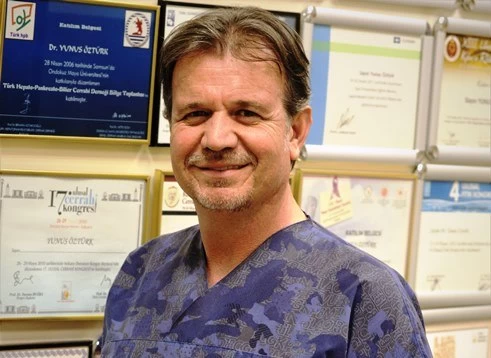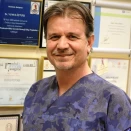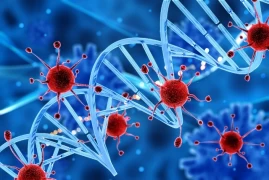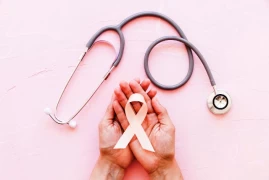
Breast Cancer and Breast-Conserving Surgery
- Breast Cancer and Breast-Conserving Surgery
- What is Breast Cancer?
- What are the Risk Factors for Breast Cancer?
- What are the Symptoms of Breast Cancer?
- How to Prevent Breast Cancer?
- Diagnosis of Breast Cancer
- Treatment Options for Breast Cancer
- What is Breast-Conserving Surgery (BCS)?
- What are the Advantages of Breast-Conserving Surgery?
What is Breast Cancer?
The breast is a complex organ composed of fatty tissue, connective tissue, and glandular tissue. In particular, breasts are associated with milk production and breastfeeding functions, especially in women. In the center of each breast, there is a wide milk duct that extends towards the nipple. Additionally, smaller ducts are present in the areas closer to the nipple. The breast lobes are composed of milk-producing glands.
Within the breast tissue, lymphatic vessels are also present. These lymphatic vessels connect to the axillary lymph nodes, establishing a connection with the chest region.
Breast cancer occurs when breast cells proliferate and grow in an irregular manner. While this disease can affect both men and women, it is more commonly observed in women.
In summary, breast tissue contains lymphatic vessels and has connections with axillary lymph nodes. Breast cancer arises due to the uncontrolled growth of breast cells and is more frequently seen in women, but can also occur in men.
What are the Risk Factors for Breast Cancer?
Breast cancer can be influenced by various risk factors, including:
- Gender: Women are at a higher risk of developing breast cancer compared to men.
- Age: Advanced age is a factor that increases the risk of breast cancer. The risk further escalates during the postmenopausal period.
- Family History: Having a first-degree relative (mother, sister) with breast cancer can increase an individual's own risk.
- Genetic Factors: Specific gene mutations, such as BRCA1 and BRCA2, can increase the risk of breast cancer.
- Radiation Exposure: High-dose exposure to radiation (e.g., chest radiation therapy) can increase the risk of breast cancer.
- Hormonal Factors: Factors such as early onset of menstruation, late menopause, nulliparity, or giving birth at an older age can influence the risk of breast cancer.
- Obesity and Alcohol Consumption: Being overweight and regularly consuming excessive amounts of alcohol can increase the risk of breast cancer.
- History of Previous Breast Cancer: Having previously experienced breast cancer increases the risk of developing cancer in the other breast.
While these factors can affect the risk of breast cancer, the extent of their impact may vary in each individual. Consulting a healthcare professional and undergoing regular screenings are important for assessing breast cancer risk.
What are the Symptoms of Breast Cancer?
Breast cancer can manifest with various symptoms. In some cases, it may be detected without any symptoms, but rather through suspicious findings during desired or routine screenings such as mammography. The symptoms of breast cancer include:
- Presence of a lump or firm mass felt in the breast or under the armpit
- Discharge from the nipple or changes in the nipple (size, shape, appearance)
- Changes in the breast skin
- Peeling and flaking of the dark-colored skin surrounding the nipple
- Swelling, enlargement, and dimpling of the breast skin
- Redness and textural changes in the breast skin resembling the appearance of orange peel
Breast cancer symptoms can vary from person to person, and in some cases, there may be no symptoms at all. However, it is important for individuals who notice any of these symptoms or similar findings to consult a healthcare professional. Early diagnosis is crucial for the manageability and favorable prognosis of breast cancer.

How to Prevent Breast Cancer?
Similar to other types of cancer, breast cancer can be managed, risks can be eliminated, or minimized. The first step in the treatment process is to reduce the risk factors that contribute to the onset of the disease. Adopting protective measures such as maintaining a healthy weight, regulating dietary habits, and engaging in regular exercise are important steps that should be followed by everyone.
Breast tissue varies in density and firmness from person to person. Similarly, within the same individual, breast tissue undergoes certain changes due to factors such as aging, pregnancy, and breastfeeding. Therefore, regular self-examination of the breasts is a highly important screening method.
Diagnosis of Breast Cancer
Early detection of breast cancer, as with all cancers, increases the chances of successful treatment and expands the range of treatment options.
- Clinical Breast Examination: Your doctor will examine both your breasts and underarm area to check for any lumps or masses.
- Mammography: Mammography is a commonly used method for diagnosing and screening breast cancer.
- Breast Ultrasound
- Image-Guided Biopsy: Image-guided biopsy, performed under the guidance of imaging techniques, is a primary method for making an accurate diagnosis of breast cancer. It may also involve the placement of a small metal marker in suspicious areas for future surgical or imaging studies.
- Magnetic Resonance Imaging
Treatment Options for Breast Cancer
The most common treatment method for breast cancer is surgery. If performed by experienced surgeons, the success rate of surgery for breast cancer is higher compared to other cancers.
The treatment of breast cancer involves a multidisciplinary approach, where various disciplines specialized in breast cancer collaborate and make treatment decisions based on detailed explanations of all treatment options to the patient, ensuring the active participation of the patient in the treatment process. These specialized fields include surgery, medical oncology, radiology, nuclear medicine, radiation oncology, plastic surgery, and psychiatry.
In many cases, treatment starts with surgical intervention in the early stages of the disease. Based on the pathological results obtained after surgery, options such as chemotherapy, hormone therapy, or radiotherapy can be applied to the patient, either individually or in combination. In a subgroup of patients, treatment begins with preoperative drug therapy, followed by surgical intervention.
What is Breast-Conserving Surgery (BCS)?
In the past, when breast cancer was diagnosed, the usual approach was to remove the entire breast, resulting in an impact on the patient's body integrity. Patients would agree to this surgical method, believing it to be a more effective treatment, and as a result, they would face psychological effects and challenges throughout their lifetime. However, based on recent studies, the concept and prevalence of breast-conserving surgery (BCS) have increased. Nowadays, we know that the notion of "complete removal of the breast provides better treatment, while partial removal is inadequate" is incorrect. Breast-conserving surgery (BCS) involves the removal of the diseased portion of the breast (a part of the breast) while ensuring that no cancerous tissue is left behind. BCS aims to preserve the healthy breast tissue with minimal loss while adhering to the principles of cancer treatment.
What are the Advantages of Breast-Conserving Surgery?
When appropriately selected and performed using the correct technique, breast-conserving surgery (BCS) preserves the body integrity of patients and provides acceptable cosmetic outcomes. Complete removal of the breast does not necessarily mean better treatment.
Studies comparing patients who underwent breast-conserving surgery using oncological principles with those who underwent mastectomy have shown no significant differences in disease-free survival, survival without distant organ involvement, or overall survival during 20-year follow-up periods. However, it is important to emphasize that patients who undergo breast-conserving surgery receive radiotherapy. The right technique should be applied to the right patient.





